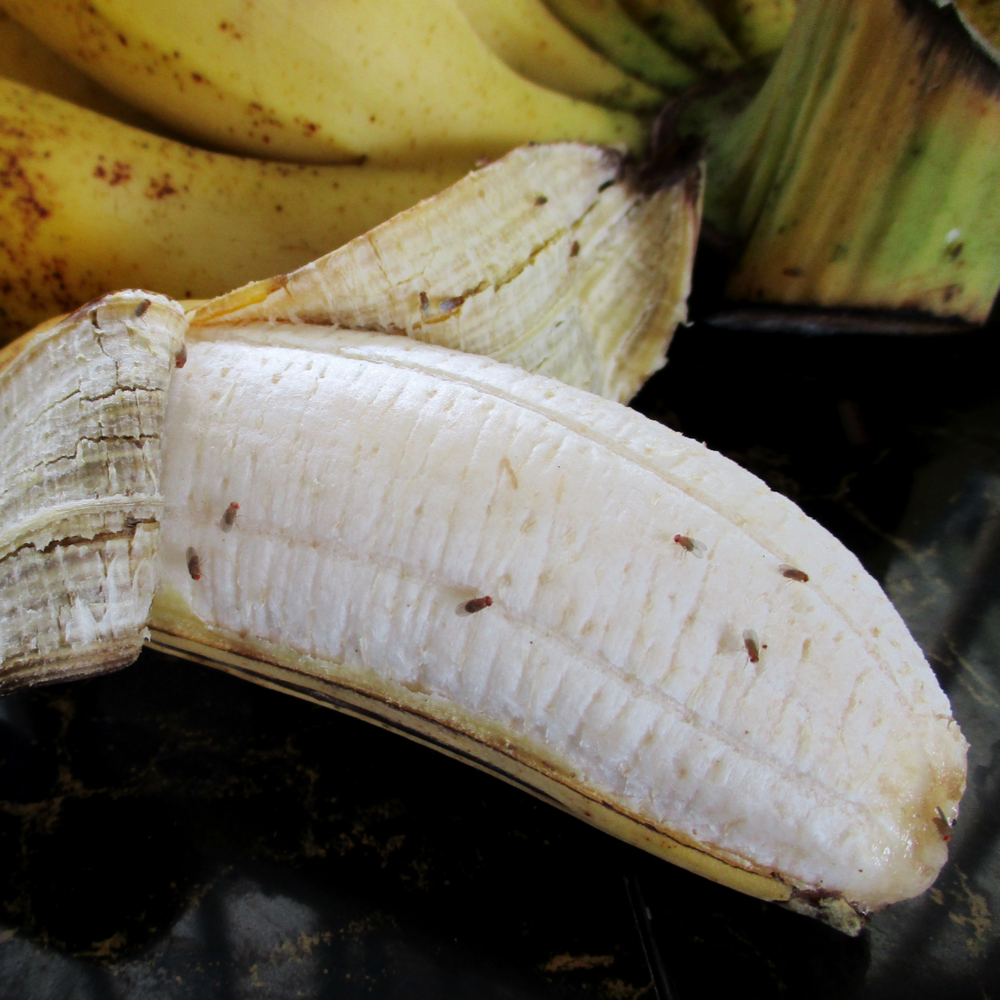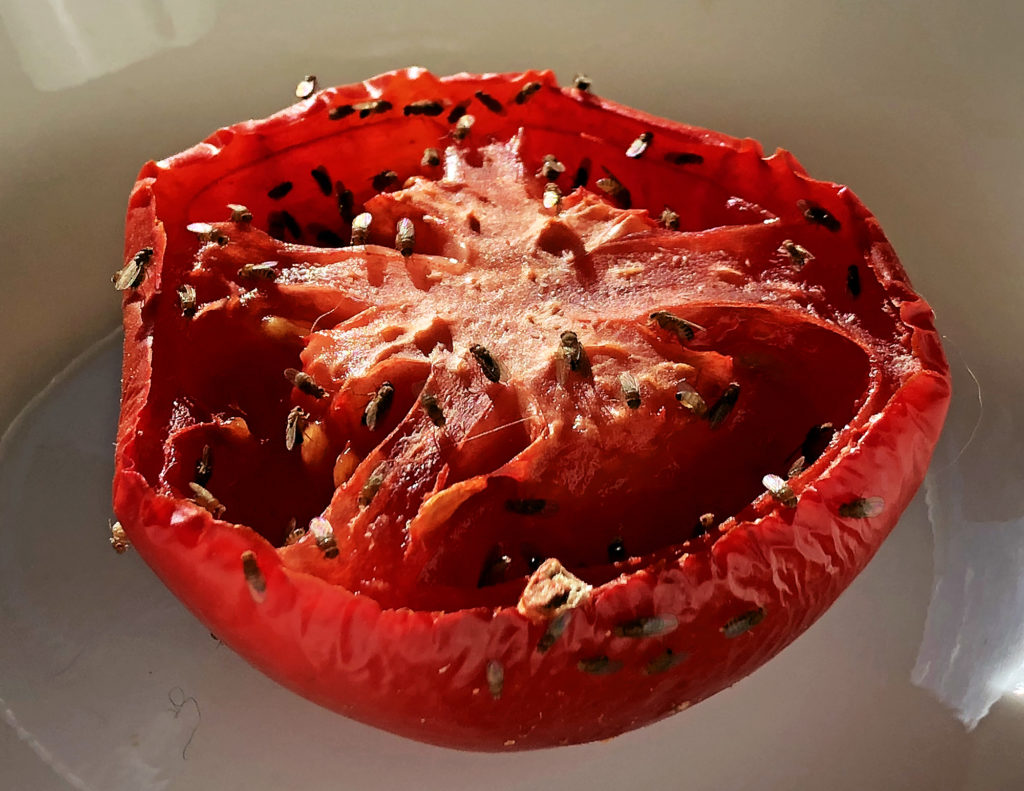Module/Week 4
Fruit Flies
Recitation Media Piece

Fruit Flies Objective:
Study and illustrate fruit fly structures and behaviors.
Recitation (the 50-minute activity) attendance is not required, but you are welcome to use that class time as office hours to ask your GTA questions, or study with classmates in 127 Weniger.
Assignment (due Sunday on Canvas)
Background for this assignment is in the Illustration webpage:
Fruit Flies Drawing
Fruit flies have been used extensively in genetics research and many of us have encountered fruit flies in overripe fruit, especially bananas. Despite the common nature of these animals, many people do not take the time to study them in detail. For this media piece, you will be watching fruit fly videos and sketching what you see. Taking the time to study and draw these small animals can open a new perspective on the complex structures and behaviors of insect arthropods that represent over half of the identified animal species.
We are providing videos that you can use to sketch fruit flies. Of course, if you have fruit flies at home, you can sketch those.
-
You can draw digitally (for example a tablet and stylus) or on paper with a pen, pencil, and/or brush.
-
This can be a single detailed and labeled drawing, or a series of drawings.
-
Include: the fruit fly body structure/shape as well as behavior. Provide detail and label/caption to further describe what you observe. Your piece will likely include a variety of observations and inferences.
-
You can focus in on a single fruit fly, or study multiple flies. Eggs will likely be too small to see, but you can include sketches of them, the larvae, pupae, and/or adults.

Upload to Canvas your original fruit fly drawing(s) containing structural and behavioral information. Be thorough and creative, this is your perspective of an animal in action.
Fruit Fly Background Information & Videos
Inferences can be incorrect if either observational abilities or prior knowledge are limited. For example: fruit flies are hard to see because they are small and most people do not have a lot of prior knowledge about fruit flies, other than the annoyance of having a swarm of fruit flies around rotting fruit on a kitchen counter.


